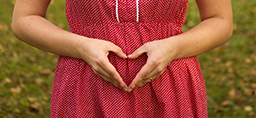
Your baby has arrived. You did it—way to go mama!
Now what should happen to you and baby before you head home?
This is a great opportunity to talk about one of the tests your baby will receive before you both leave the hospital.
Typically, babies undergo three tests before heading home after delivery. At some hospitals, these tests are done in the nursery, although many places are more commonly having them done in the rooms with the parents there.
Why? The concept of “rooming in.” It lets babies stay with their parents throughout the majority of the hospital stay.
Ever walk past the hospital nursery these days and notice it’s kind of empty? This is why. The babies are with their parents—and that’s a good thing!
In a previous post, we already looked at one of the three tests: the newborn screening. In Michigan, several more tests were added in August 2017, adding to more than 50 tests that are already performed.
But now is a good time to look at the heart test.
Know your history
The critical congenital heart defect test, also known as the CCHD test, is another one performed before baby goes home.
This test checks for seven serious, life-threatening conditions: hypoplastic left heart syndrome, pulmonary atresia with intact ventricular septum, transposition of the great arteries, truncus arteriosus, tricuspid atresia, tetralogy of Fallot, and total anomalous pulmonary venous return.
There are other issues this test can detect that, if found early, are treatable.
If your baby tests positive for something, it doesn’t automatically mean they have one of these diseases. But it does mean your baby will need follow-up testing.
Surely you’ve heard this from your doctor before, but it honestly can’t be repeated enough: It’s important to know your family history.
About 3 percent of babies are born with a birth defect, according to the American Academy of Pediatrics, and about 1 percent of these babies have a congenital heart defect.
The critical congenital heart defect test affects 1 in 4,800 babies in the U.S.
You may wonder about these diseases being picked up by earlier ultrasounds. Some heart issues can be detected at the 20-week ultrasound, but there are some that doctors can’t always detect.
The critical congenital heart defect test is a non-invasive test that measures the percentage of hemoglobin in the blood that is saturated with oxygen. It also checks the pulse rate.
In 2011, the secretary of the U.S. Department of Health and Human Services issued a recommendation that newborn screening include the critical congenital heart defect test. Currently, 43 states have regulations or guidelines in place for this screening.
This test is performed about 24 hours after the baby is born, and it’s often done when the baby is awake. It simply involves placing a sensor on the right hand and one on either foot. Delivery room staff then record the numbers, with an algorithm determining any ensuing steps depending on the results.
 /a>
/a>
 /a>
/a>
 /a>
/a>
This seems like very helpful information.